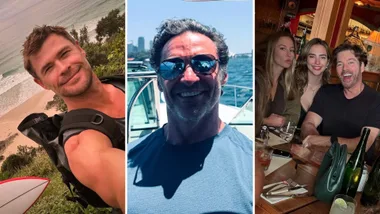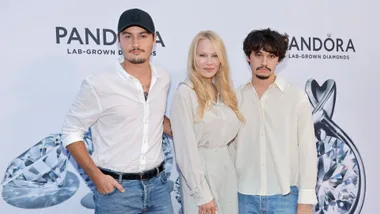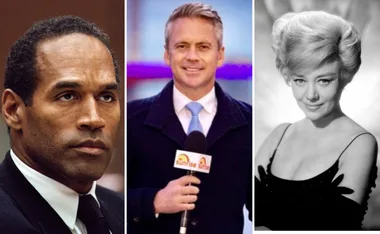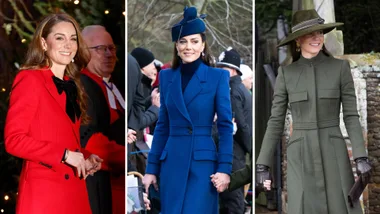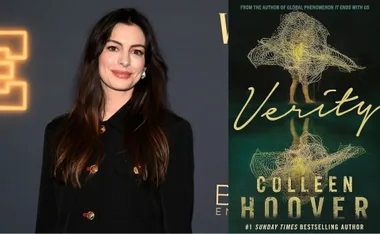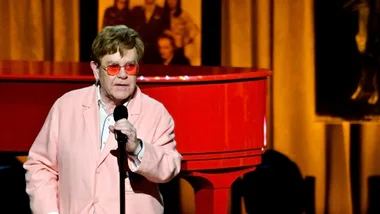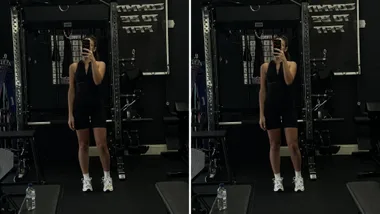Julie Parsons was born in New Zealand but has lived most of her adult life in Ireland. Her fourth book, The Guilty Heart, has been selected as the Great Read in the August issue of The Australian Women’s Weekly. It is a gripping psychological thriller and a ‘must’ for all Minette Walters and Ruth Rendell fans.
The plot: It is ten years since Owen Cassidy, eight year old son of Nick and Susan, disappeared. Their marriage has disintegrated and Nick has moved to the US to try to forget the tragedy. But wherever he goes, his conscience follows. Nick can’t forgive himself for what he was doing the day Owen disappeared, nor can he leave the mystery unsolved. Nick returns home to Ireland determined to find out what really happened.
**Q You don’t sound like you have an Irish accent at all – I thought you were very young when your family moved back from new Zealand to Ireland?
A** No, I was 12. And for some reason – I don’t know why – I never got the Irish accent. People constantly say to me ‘what do you think of the weather? And ask me how long I’ve been here and things like that.
**Q Congratulations on The Guilty Heart, it is a compulsive page-turner, I simply couldn’t stop reading it – have others reacted the same way?
A** I was in London recently doing some stuff with Macmillan and I was in a bookshop in London and one of the booksellers said to me that having enjoyed it, she gave it to her mother, who read it on the train from London to Bath and when she got to Bath, she got out and sat down at the railway station until she finished it.
**Q I imagine that The Guilty heart has been well received at home in Ireland?
A** Yes, it’s been fantastic. It’s number one on the bestsellers list in Ireland and it’s only been out a couple of weeks. Our three main daily newspapers have reviewed it and given it great reviews.
**Q You live in a place called Dun Loghaire?
A** Yes, it’s pronounced Dunleary. It’s the ferry port, so a lot of British people and holiday makers know it. If you come in a ferry from Hollyhead or Wales and if you’re coming on a driving holiday to Ireland you come to Dun Loghaire. It’s a Victorian town really, a little port about ten miles out of the city.
**Q Are you a local celebrity?
A** It’s funny, a lot of people know me – the book was reviewed in Saturday’s Irish Times, which is the paper and there was a very big photograph of me and I have been stunned…people who have never spoken to me before have been coming up to me and saying ’oh! I read about your book in the paper.’
**Q This is your fourth book, have any of the others gone to No 1 in Ireland?
A** No, they’ve been in the top five but this is the first that has gone to number one.
**Q Any thoughts on why this book has taken off?
A** I think the idea of a child disappearing is very compelling because it’s pretty much the worse thing that could ever happen. I think people are interested in the subject matter. It’s very hard to judge yourself. I’ve always tried with all my books to give them that on the edge of your seat quality, so that the reader is completely absorbed and wants to know what’s going to happen. It certainly seems that with the response I’m getting to this book, that it has worked like that. I think that must be it.
**Q Did you use the device of a missing child because it makes a compelling plot or was there some other reason?
A** It’s hard to put my finger on why, but usually when I’m writing a book by the time I’ve got to the end of it, I’ve begun to think well next, I’m going to do this. I think I found it so intriguing in a way and what I really wanted to do was to look at what can happen when a child goes missing. I didn’t immediately have a view as to what would happen. But…you know the Spanish painter Miro, they say he takes the line for a walk? In a way what I did was I took the story for a walk, and I wanted to take it to its conclusion and that was what I did.
**Q All your books have been psychological thrillers, is there a particular reason you are drawn to writing this kind of book?
A** The initial answer is ‘yes’ I did like reading them. I’ve always been a great Ruth Rendell fan. And love particularly Patricia Highsmith and P.D. James. I was very intrigued by them. I also really hate that snobby thing people have about thrillers. So when I started writing, I started going to a writers group. I was writing a book that was quite autobiographical and then I thought, this is so predictable, this is what everybody does, the first novel is about you and your family sort of thing and I thought I’d love to write something that was a complete work of fiction, and I got the idea for Mary, Mary my first book. I can’t understand how it happened, but it did and I thought ‘this is a fantastic idea, I have to write this.’
But since then I have begun to realise that…do you know the story about how my father was lost at sea? (Julie’s father, Andy Parsons, went missing at sea in the South Pacific in a marine mystery that has been likened to the Marie Celeste).
I think that in some ways on a deeper, emotional level, I have been trying to solve mysteries. It’s become very interesting to me to find out what happened. So in my own fiction I have been doing this, find out what happens in a way I can’t find out in my own life. I think there are huge echoes in all my books of the experience. In Mary, Mary there was the theme of the absent father which I wasn’t really conscious of until after I finished writing it and obviously, loss is a huge part of The Guilty Heart. It doesn’t surprise me now that I’m so interested in solving these mysteries, working out what is it that has happened and where the person has gone. How did it all happen? I think that ties in very much with my own experience.
**Q How old were you when your father went missing in 1955.
A** I was four, I was born in 1951.It’s my birthday in May and I will be fifty-two!
**Q Do you have any memory of the tragedy?
A** I don’t remember the day it happened. But I remember, when my mother realised my father wasn’t going to come back – it took a while to find the boat – the only thing she could do was take us back from western Samoa, where we were living at the time, to New Zealand. She sent my sister and brother, who were older, back by themselves. And took me with my little brother with her and all her belongings. I remember the trip back because there was a cyclone and a terrible storm, and I remember sitting in the cabin and my brother, who was 2, on his potty, sliding across the room. From one side to the other.
I remember a really strange sense of wonder. And occasionally the front door would open and you’d think ‘oh,it must be Daddy.’ Or you’d hear footsteps and you’d think ‘oh, Daddy’s coming back.’ I’d be coming home from school and I’d think, ‘Daddy will be there.’ But remember in those days people didn’t talk about things very much. If it happened now, there’d be an army of counsellors and therapists on your doorstep. In the fifties it was almost bad manners and you were expected to get on with your life. And that’s what my mother did. She was very brave. She survived it all and kept on going and it was just accepted that that was the way things were.
**Q How did you go from Ireland to New Zealand and then Samoa?
A** My parents emigrated from Ireland in 1947 after the war. My father was in the British army and was decorated and my mother was in the WRNS. Ireland then like the rest of Europe was a pretty miserable place. And they decided to leave and went to New Zealand. He worked as a doctor just outside Auckland and then he decided to go to Samoa to work in the hospital there and I think he thought it would be a further adventure to go off to this little island. So they went to Samoa and he was working for the government which was why he went on this boat to go to another island and why everything happened that happened.
**Q The disappearance of the boat, the Joyita, remains an unsolved mystery?
A** It does, completely. The boat was found but there was nobody on it. There’s never been a conclusive understanding of what actually happened. I think there were 25 people on the boat and there were children, a 10 and a 12 year old, islanders, so it was a tragedy that spread across the Pacific in many ways . Lots of people’s lives were touched by what happened.
**Q No trace of either the cargo and of anyone on board was ever found?
A** No, I presume that they unfortunately disappeared in the South Pacific which is really such a huge expanse of water that they were probably never going to be found.
**Q You were 12 years before your mother decided to return to Ireland?
A** She had to wait until my father was presumed dead because there was no body and in those days my father owned the house and the bank account and everything else, so she couldn’t sell the house until he was legally dead, so she had to wait for seven years. She went the High Court and they had him declared presumed dead and she decided to bring us all back over here.
**Q Going on the list of jobs you’ve held, it’s been a long and winding road to becoming a full time writer
A** Yes(laughing), it has.
**Q Was the desire to write always there?
A** Yes I was one of those kids who reads all the time and because I grew up in the days before television, I was a head in the book kind of kid. I always thought I was going to write a book and time passed and I didn’t. The older you get, your confidence drains away. You stand in the local bookshop and look at the bestsellers and think the world doesn’t need another writer and it certainly doesn’t need a mediocre writer. This isn’t going to happen to me. I had various stabs at writing short stories that didn’t work. I’m not good at them and eventually, urged on by a good friend I started going to a writer’s group. And that was the catalyst for me, it was fantastic.
I got a contract for Mary, Mary on the basis of a synopsis and three chapters. I got this great idea, going into work one day,. When I got to work I immediately jotted it down. And then I just thought, ‘this is good.’ So worked out the plot and wrote it in synopsis form and then wrote the three chapters and sent it to a local Irish publisher. I remember I wrote in my diary ‘sent stuff,’ thinking ‘give her a month.’ She phoned the next day and said I just read what you sent me and the hairs on the back of my neck are standing up. Send me some more and if I like it I’ll send you a contract. And that was what happened. I mean the money was – it was like 3000 Irish pounds but I decided to take leave of absence from my job to write it. I was working as a television producer at the time, on a show called Check Up. It was a human interest show and we’d pick an illness of the week. But I knew I couldn’t write and work. So I got an unpaid leave of absence and my husband said, ‘do whatever you have to do.’ So I came home and got on with it and six months later, it was done.
**Q You must have been excited to get that response from a publisher?
A** I was, I couldn’t believe it . I was totally bowled over. You never really know – you think its great and you give it to a couple of other people to read and they say that’s very good, but you don’t really know. I was delighted, then when I finished it and my Irish publisher took it to Macmillan. They said they were going to take it to the Frankfurt Book Fair and sell the translation rights. I was completely astounded – couldn’t believe it. But they did. Mary, Mary was published in 17 countries.
**Q I loved your last book, Eager To Please, have the film rights been snapped up?
A** It has. It was optioned by an American production company and in fact they are just renewing for a third time. The script has been written and I’m expecting it to arrive in the post any minute. And Mary, Mary has been optioned as well for a TV series and the script has been written by the same people who wrote Ballykiss Angels.
**Q Outside of writing, your list of jobs included artist’s model – why does that always sound scandalous?
A** Well…you do stand up in front of people and take your clothes off. Initially when I started doing it, there was a sense of bravado. I could have got a job as a waitress, but I thought ‘oh, what the hell?’ I did it off and on for a quite a few years. In Dublin. And I lived in New Orleans for a year which was why I decided to set the beginning of The Guilty heart there. And I actually modelled at the art college where Nick does his classes so I know that place.
**Q Was there was particular reason why you chose to tell the story through Nick?
A** I wanted to see if I could do it. I was conscious that in the other books, the main characters had always been a woman. And I thought this would be interesting. But I wanted to look at the relationship between a father and child and I think that often fathers are dismissed in the parenting process, so I wanted to see what that would be like and see it from his point of view and make him a real father.
**Q I found Nick very believable – including his slinking off to have the affair?
A** The review in the IrishTimes said it was not a nice book but it was a good book. And of Nick, well he’s not a good person but a nice person. I was interested in Nick’s insertion into women’s society. Him being the one taking Owen to school and being a part of that Mum environment, I was intrigued by that…
**Q And the temptation that lurked there for a man like Nick in that situation?
A** Absolutely. The women would spoil him and make a fuss of him and there was a a sense that they had to be extra nice to him because ‘isn’t he lovely?’
**Q I also thought The Guilty Heart was about the impact of a tragedy on a marriage?
A** I did quite a lot of research about subject and one of the things people always say is that couples grieve differently and grieve at different times. The husband might be having a bad day and the wife might feel like she’s coping and can get on with it and doesn’t want to get dragged back into it. And then the next day she could be feeling totally unable to move. And he’s thinking I have to get on with my life. This is one of the things that is a real problem for people in that situation. That they go through their stages of grieving at a different pace. And in a different way and that’s what makes it really difficult because they can’t always be there for each other. They want to, but because they have to look after themselves as well they can’t be absorbed by their partner’s grief and their way of coping. Apparently people in situations like this do divorce and separate very frequently.
**Q The irony or perhaps tragedy of The Guilty Heart is that they were devoted, loving parents, yet they were still blind to some things that were going on in their child’s life?
A** Yes, I think that happens a lot. There is a level of understanding the way children express themselves that adults don’t get in some ways. They just don’t hear it. So although they do love Owen very much and he is the centre of their life, they really haven’t a clue what’s going on. Later they say they can see the signs, but at the time, they don’t get it at all.
**Q Do you have children?
A** Yes. Harriet, my 27 year old daughter and two step-children. Sara 32 and Paul 27.
**Q So you know that awful feeling of having a child disappear if only for a second?
A** I remember when Harriet was about 3 we went shopping in Dublin and there’s a street called Moore St., a market street, and we were walking along and I turned around and she was gone and I remember, I was rushing up and down and I ran up to a policeman and said ‘my daughter’s gone! I can’t find her!’ And we started back and I was calling and there she was, sitting on a footpath eating an apple, quite happily. And it was that terrible feeling you can’t make a fuss about it, but inside you’re terrified – those very conflicting emotions. But it always stuck with me that terrible moment when I couldn’t see her anywhere.
**Q People compare you to Minette Walters and Ruth Rendell, how do you feel about that?
A** I think it’s a huge compliment, I don’t mind at all. I think it’s great when people think you can aspire to being like people who are very, very successful and highly regarded.
**Q Your birth sign?
A** Taurus
**Q Favourite writer?
A** I love Nadine Gordimer. I’ve read all her books and go back and re-read her books periodically. And the other writer I love is Jane Austen. I think I read Pride and Prejudice every year, at some stage.
**Q How long have you been married?
A** Only for a year but John and I have been together for 17 years.
**Q Why get married after all that time?
A** For a long time divorce wasn’t legal in Ireland, not until about five years ago and John was married before so it wasn’t that straightforward but then he got a divorce. We waited a bit, it’s interesting when the divorce laws came in the general view was that there would be a rush for people to marry but that’s not what happened. People took a while. I think they weren’t quite sure it had happened and they waited…
**Q What work does your husband, John, do?
A** He’s a media consultant. Does a lot of training work. He’s an ex-radio producer.
**Q Do you still feel influence by your time spent in New Zealand?
A** I do – very, very much. I went back in 1999 for the first time since we left and it was an incredibly emotional experience. There was such an enormous contrast between NZ and Ireland. In the 1950’s NZ was a very open, secular society and Ireland in the fifties was completely closed, totally dominated by the Catholic Church and very poor. I always think of it as NZ was technicolour and Ireland was black and white. And it was a huge shock. Because our mother had always brought us up to think of ourselves as Irish. When we got here we realised that we weren’t at all. We didn’t speak like anyone else, or look like anyone else. We were used to running around barefoot in summer in our shorts and bathing suits. Which wasn’t really the Irish way, so I think I still have that big contrast. But I think really the biggest effect that living in NZ had for me was it made me very, very conscious of my senses. I grew up in this beautiful village by the sea. Much of our life was spent outside and I have this really strong sense of the feeling of the sun on my back. We’d be in and out of the sea all summer and you’d lick your arm and taste the salt. The feeling of the sand between your toes and that sort of thing. So when I’m writing, I try to get that strong, visceral sense and I try to put it into the writing because I really want people to physically experience what’s happening. And I think in many ways in my writing as been the big effect. I hope that the reader is drawn into the story and not just at an intellectual level, but at an emotional and sensual level too.
**Q Is your husband the first person to read your manuscript?
A** I still go to the writer’s group, so I read to them. But he is the first person who reads the whole thing. He’s very good. He will sit down for two days and read and it’s terrible, because I keep on looking at him and he’s very inscrutable, doesn’t give anything away and I go crazy and the worse thing is when he’s reading it in bed! And he has a pencil in his hand. And oh, I’m nearly dying! But his criticisms are always very valid. He usually says it’s absolutely fantastic but I think you need to look at this, this and this. And I go off and do that.
**Q You’re writing full time now?
A** Yes. When I got the commitment from Macmillan that they wanted to publish two more books, they gave me enough money so that I could give up work and I’ve never regretted it for a single minute.
**Q You’re very contented with your life and writing full-time?
A** Yes, I love it. You have days when you’re in despair and you think ‘I can’t do this!’ But no, I have realised that I like being on my own. I have a certain hermit quality, so I enjoy the process of sitting down by myself and doing it all by myself. When I was a TV producer it was so difficult having to have so many other people involved in everything you did. This way, you never have to go to the props department.
**Q Describe where you live?
A** In a terrace house, one of six built in 1803. They are among some of the oldest houses in Dun Loghaire. It’s a late Georgian house and I live just up from the harbour. Dun Loghaire is an old fashioned port with two long piers. The east Pier has the bandstand and respectable people there. The west Pier near me is where people walk their dogs and it’s much more wild and natural and it’s where I walk. It’s a small town, everyone knows everyone else. It’s lovely. My mother grew up here, a quarter of mile from where I live. My Grandfather was the Canon of the mariner’s Church, he was a Church of Ireland clergyman. When I was a child in NZ , every night my mother would tell us stories about when she was a little girl and so Dun Loghaire was almost a kind of magical place for me. So I’m really pleased I live here.
**Q Pets?
A** I have two cats, Oliver and Nelly. And they’re half brother and sister. Nelly is the eldest and an incredibly fierce hunter. Oliver, who is very beautiful is a neutered Tom. We have a house on an island, West Cork which is in the south west of the country and we go down there in the summer and we take the cats, which is great. Nelly loves it because she goes out and hunts. But Oliver gets quite nervous. I told the vet about it and he said ‘well, neutered Toms tend to introspection (laughing).’ And it’s an absolutely perfect description of Oliver. He looks worried. It’s a sort of pained expression.
**Q Outside of work, one of your interests is going to the island?
A** Yes, it’s called Sherkin Island. And we sail. My husband is a very keen sailor and he’s very interested in traditional boats, a kind of 19th century rig. And there’s quite a movement here to restore a lot of the Irish traditional boats which would have been fishing boats. So we sail a lot.
**Q Given your family history, aren’t you frightened of sailing?
A** I am and I’m not. I like the sea but I’m not mad about going outside of the sight of land. Sometimes I go out and I suddenly get the sense that there’s a big depth below me. I’m a fair weather sailor. I am fascinated by the sea. One of the things living near it, is that it’s always different. Every time I look at it I see something new. It’s always changing and I think that’s inspiring. It’s also very restful.
**Q It sounds like life has worked out very well for you?
A** It has – I have to touch wood. As I’m sitting here I’m touching my desk. I think one of the long lasting effects of having something happen to you, like what happened with my father where your life is transformed, is that there’s always a sense that it’s great today but be careful about tomorrow. It might not always be like this so don’t take anything for granted.
I do think I’m very lucky. There’s a lot of luck involved in publishing. There’s a lot of luck producing a book that someone wants at the right time.
So I think I am lucky. John says ‘don’t be ridiculous you’re very talented.’ And obviously (laughing), yes, I do have talent, but I’m modest enough I think, to know, that there are other people who are equally talented but just haven’t had the breaks I’ve had.
Newsletter conversion description. Get the latest in your inbox.


